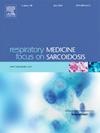Obstructive sleep apnea in adult dialysis patients: A review
IF 3.1
3区 医学
Q2 CARDIAC & CARDIOVASCULAR SYSTEMS
引用次数: 0
Abstract
Obstructive sleep apnea (OSA) is an extremely common but underdiagnosed problem in adults receiving dialysis therapy. Patients with end-stage kidney disease (ESKD) on hemodialysis or peritoneal dialysis have a higher prevalence of OSA compared to the general population (Nicholl et al., 2013; Kimmel et al., 1989; Markou et al., 2006). This condition carries significant clinical implications, contributing to impaired sleep quality, daytime fatigue, and elevated cardiovascular risk if left untreated (Marin et al., 2005; Burkhalter et al., 2024). In fact, untreated OSA is associated with markedly higher rates of hypertension and adverse cardiac events in susceptible patients (Nicholl et al., 2013; Burkhalter et al., 2024). Despite these dangers, OSA often goes unrecognized in dialysis patients, partly because its presentation can be atypical or masked by uremic symptoms.
This review provides a comprehensive overview of OSA in adult dialysis patients. We discuss how OSA prevalence in dialysis populations is extremely high (often affecting half or more of patients) and examine why conventional screening tools may fail to identify many cases. We also describe the unique pathophysiological contributors in ESKD, such as fluid overload and its redistribution, that predispose patients to OSA. Finally, we review management strategies, including standard therapies like continuous positive airway pressure (CPAP) and dialysis-specific interventions such as intensive volume control and nocturnal dialysis. Improving awareness and treatment of OSA in this vulnerable population is crucial to enhance patient outcomes and quality of life.
成人透析患者的阻塞性睡眠呼吸暂停:综述。
阻塞性睡眠呼吸暂停(OSA)在接受透析治疗的成年人中是一种非常常见但未被诊断的问题。与一般人群相比,接受血液透析或腹膜透析的终末期肾病(ESKD)患者的OSA患病率更高(1-3)。这种情况具有重要的临床意义,如果不及时治疗,会导致睡眠质量受损、白天疲劳和心血管风险升高(4,5)。事实上,在易感患者中,未经治疗的OSA与高血压和不良心脏事件的发生率明显升高相关(1,5)。尽管存在这些危险,但OSA在透析患者中往往未被发现,部分原因是其表现不典型或被尿毒症症状所掩盖。本文综述了成人透析患者的OSA。我们讨论了透析人群中OSA患病率极高的原因(通常影响一半或更多的患者),并检查了为什么常规筛查工具可能无法识别许多病例。我们还描述了ESKD中独特的病理生理因素,如液体过载及其再分配,使患者易患OSA。最后,我们回顾了管理策略,包括标准治疗,如持续气道正压通气(CPAP)和透析特异性干预,如强化容积控制和夜间透析。在这一弱势人群中提高对阻塞性睡眠呼吸暂停的认识和治疗对于提高患者的预后和生活质量至关重要。
本文章由计算机程序翻译,如有差异,请以英文原文为准。
求助全文
约1分钟内获得全文
求助全文
来源期刊

Respiratory medicine
医学-呼吸系统
CiteScore
7.50
自引率
0.00%
发文量
199
审稿时长
38 days
期刊介绍:
Respiratory Medicine is an internationally-renowned journal devoted to the rapid publication of clinically-relevant respiratory medicine research. It combines cutting-edge original research with state-of-the-art reviews dealing with all aspects of respiratory diseases and therapeutic interventions. Topics include adult and paediatric medicine, epidemiology, immunology and cell biology, physiology, occupational disorders, and the role of allergens and pollutants.
Respiratory Medicine is increasingly the journal of choice for publication of phased trial work, commenting on effectiveness, dosage and methods of action.
 求助内容:
求助内容: 应助结果提醒方式:
应助结果提醒方式:


